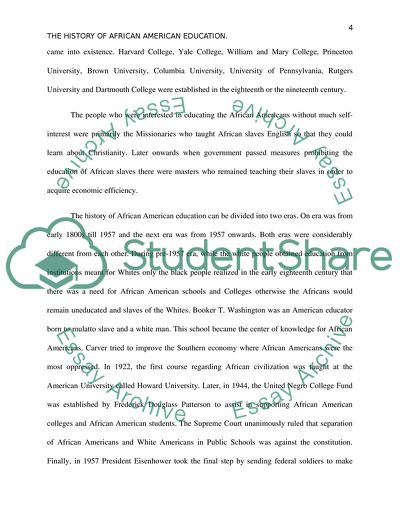Cite this document
(The History of African American Education in America Research Paper, n.d.)
The History of African American Education in America Research Paper. Retrieved from https://studentshare.org/history/1782504-the-history-of-african-americans-in-education-dating-back-to-the-turn-of-the-century
The History of African American Education in America Research Paper. Retrieved from https://studentshare.org/history/1782504-the-history-of-african-americans-in-education-dating-back-to-the-turn-of-the-century
(The History of African American Education in America Research Paper)
The History of African American Education in America Research Paper. https://studentshare.org/history/1782504-the-history-of-african-americans-in-education-dating-back-to-the-turn-of-the-century.
The History of African American Education in America Research Paper. https://studentshare.org/history/1782504-the-history-of-african-americans-in-education-dating-back-to-the-turn-of-the-century.
“The History of African American Education in America Research Paper”, n.d. https://studentshare.org/history/1782504-the-history-of-african-americans-in-education-dating-back-to-the-turn-of-the-century.


